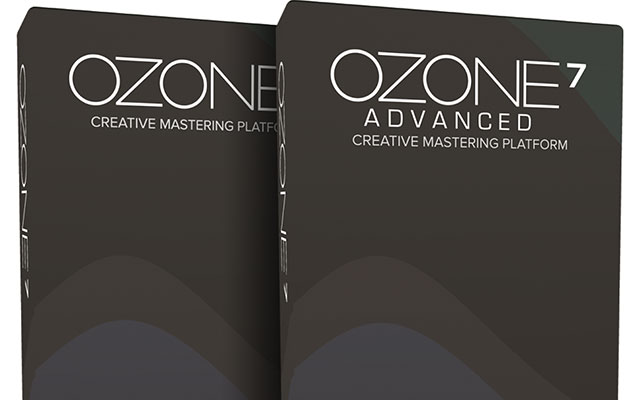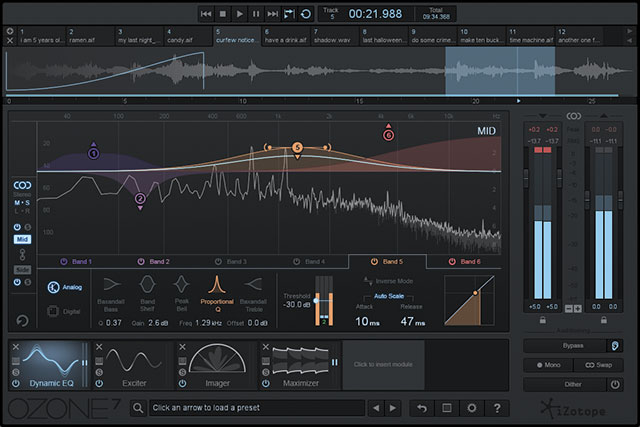
Longtime audio-tech outfit iZotope has returned to the market with Ozone 7, the update to its flagship mastering software.
Its previous version, Ozone 6, marked a change in the plug-in’s appearance and functionality, and version 7 picks up where 6 left off. Both standard and advanced versions are available with the former version boasting a few more features, mainly in the form of new modules. As I have done reviews for Ozone 5 and Ozone 6 in previous issues of DJ Times, this review will highlight what I feel are some of version 7’s most exciting new additions.
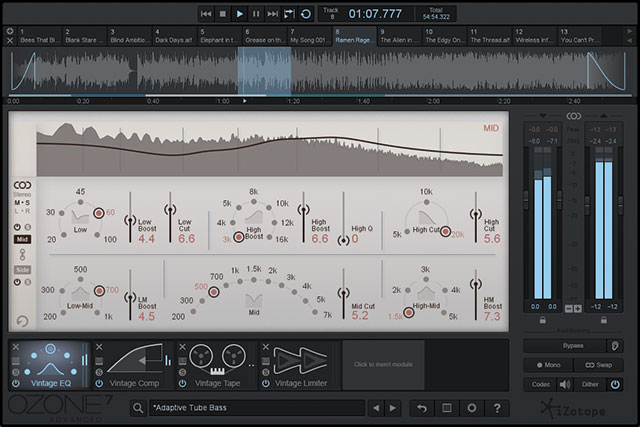
What’s New: Four new vintage-style modules are included in the advanced version: Vintage Tape, Vintage EQ, Vintage Compressor and Vintage Limiter. As a longtime user of Ozone, I had always hoped that iZotope would eventually give users the ability to add a bit of warmth to their tracks. Well, they must have heard me, because the new vintage-style modules sound great.
The Vintage EQ is modeled after a Pultec, one of my favorite analog EQs. Vintage Tape captures the phase and saturation characteristics of analog tape, without the noise or flutter often found when using analog tape machines.
Vintage Compressor is not modeled after any specific analog compressor; however, it does have that sonic roundness that you get when using a vintage-period compressor.
Vintage Limiter is inspired by the ultra-high-end Fairchild 670 and offers three different modes: Analog, Tube and Modern. This is a wonderful limiter. It’s very easy to use and I really like what it brings to the table sonically. Tracks sound punchy, but not overly crunched, like some digital limiters tend to do when pushed.
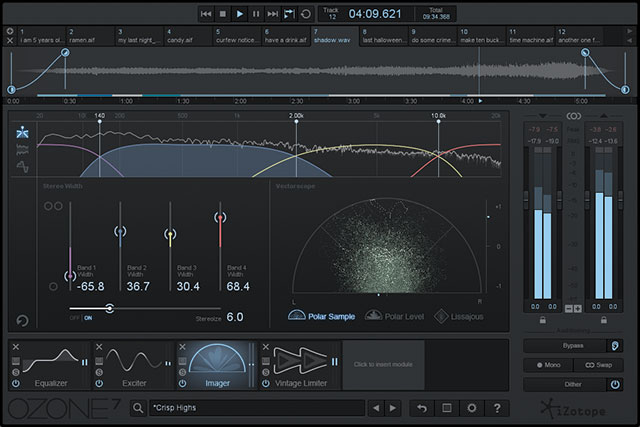
GUI & More: The vintage-style modules have a different GUI than the other modules, and I would be remiss if I didn’t mention the addition of the IRC IV algorithm to the Maximizer. IRC IV utilizes spectral shaping and filtering to better analyze your audio as it’s being treated.
An Example Scenario: If your track has a bit too much low end in the mix, applying a maximizer can often cause other parts of the track (like the vocals or synths) to distort. The IRC IV has ability to analyze the audio, make adjustments and help tame the low end, so that the rest of the track does not suffer when being maximized.
Classic, Modern and Transient are the setting options. And, here’s where Ozone raises the bar even higher: Codec Preview. You now have the ability to preview your audio file at the desired bit rate before exporting it. This is a huge time-saver, as you no longer have to export a file, listen to it, and then go back into your session, make your adjustments, and re-export it.
Codec Preview also allows you to solo the artifacts that are introduced into the file when exporting a WAV of AIFF file to an MP3 or AAC file for some sonic perspective. It’s always interesting to me to hear what artifacts are induced into a track when exporting the file as an AAC of MP3. The inclusion of MP3 and AAC as exporting options is also a new feature in version 7.
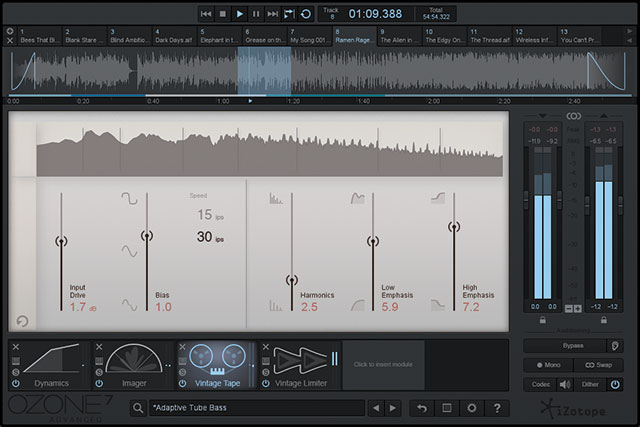
Prices: The standard version only includes the Vintage Limiter module, the updated Maximizer with the new IRC IV algorithm, and the MP3/AAC export option. The MSRP is $299, and the advanced version is $499.
Conclusions: Truth be told, iZotope’s Ozone is one of my “desert-island” plug-ins and I’m excited to take advantage of all of the new features packed into this latest release. I’ll be using this one in my studio through 2016 and beyond… or until we see Ozone 8. Hats off to the team at iZotope.


